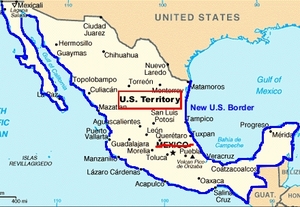In 1949, one baseball player had a .311 career batting average, and helped carry the Dodgers to six league flags (Rader 2002). This player’s life was regularly threatened, not so much because of his talents but because of the color of his skin (Rader 2002:167). This player was Jackie Robinson. Jackie Robinson is known for being one of the first black players who helped change race relations in baseball. Robinson’s integration into white baseball helped create a starting point for black players, but unfortunately did not immediately help the full desegregation of black players in mainstream baseball. The full integration of black ball players into mainstream baseball had a slow progression. Integration slowly and unevenly developed for black baseball players from 1947 to 1960 (Rader 2002).It can be argued that the reason for the slow progression of black players’ desegregation into mainstream baseball is due to the fact that they only partially assimilated, and can be analyzed by Gordon’s theory of assimilation.
Gordon’s theory of assimilation has three models that can help further analyze the relationship of race relations and desegregation within baseball. Gordon’s models of assimilation demonstrate the relationship between minority groups and the ways they interact with American culture. The three models within the theory of assimilation are Anglo-conformity, the Melting pot, and Cultural Pluralism. Each model of assimilation can be analyzed and demonstrate reasons why black ball players integration into baseball slowly progressed. Gordon’s models discuses two types of assimilation, behavior and structural. Behavioral assimilation is when minority groups develop traits of the mainstream culture (Gordon 1982). Structural assimilation is when minority groups are incorporated into the institutions of mainstream society (Gordon 1982). These two forms of assimilation can be further understood by analyzing each model separately with relation to black ball player’s slow integration into mainstream baseball.
Gordon’s Anglo-Conformity model demonstrates that immigrant groups can have behavioral assimilation, but not structural assimilation (Gordon 1982). Behavioral assimilation is demonstrated in this model because minority groups can incorporate mainstream cultural traits like language, English standards, and beliefs of the American culture. However, structural assimilation does not happen because mainstream culture may not accept the minority groups because they feel they are superior. This model claims that Aryans are naturally superior and that any other races are inferior (Gordon 1982). Gordon claims in this model that inferior groups which include blacks were excluded from mainstream society (Gordon 1982). The minority groups may behave like the mainstream culture but may not be accepted into their institutions. The Anglo-conformity model can be demonstrated in context to the slow integration of black ball players within baseball.
By using the Anglo-conformity model, it demonstrates that because of Anglo-superiority or racism, black baseball players slowly integrated into white baseball because they were not accepted into White baseball institutions and leagues. Even though black baseball players incorporated traits of mainstream baseball culture they still were not accepted to play in white baseball institutions (Rader 2002). Racism was incorporated into mainstream American culture and affected black baseball players. Even though black baseball players continued to adapt to baseball culture, they still were faced with discrimination and race relation obstacles. Instead, the black players created their own major league called the Negro National League which was the equivalent of the National League in white baseball, but was a separate institution (Rader 2002:158). In the NNL, Black baseball players played as many or even more games than white players, and they also barnstormed (played teams outside of leagues) just like white teams, but faced many more hardships. The racism or superiority of white baseball caused hardships that included: Black players traveling at night and playing during the day, being discriminated from hotels, searching for teams to play, and trying to appeal to the white crowd. Gordon’s Anglo-conformity model suggests that black baseball players were delayed in the progression of integration into white baseball institutions because of racism.
Gordon’s melting pot model does not involve racism, but instead claims that both dominate and minority groups adapt into each others cultures, creating a new blend or community (Gordon 1892). In this model both behavior assimilation and structural assimilation is demonstrated. Gordon demonstrates that in this model Anglo society or also American society accepts minorities into their culture and incorporate some of their traits, and minorities behave similarly with the dominate culture.. During the 20th century, this model represented the goal that black ball players wanted to achieve, but did not reach because of racism and segregation. Instead, other minority groups like Cubans achieved the melting pot model.
Cubans during the 20th century adapted traits of white baseball, but were also able to blend their culture in and were accepted into mainstream baseball (Rader 2002). Cubans did not face the racism Black players faced. White baseball accepted Cubans because they adapted American culture and looked “White enough” but their culture was also acknowledged because of their different playing styles. Some black baseball players tried to label themselves as Cuban in attempted to be accepted into white baseball culture. Black baseball players also had a different playing style from white baseball players. Unlike white baseball that focused on home run aspect, black baseball concentrated on speed, bunts, and stealing bases (Rader 2002). Unfortunately, their attempt did not work and racism continued to segregate the black baseball players. Unlike the Cubans, black baseball player’s cultural traits were not immediately adapted into American culture like shown in the melting pot model and this gives reason to why integration of baseball took a long time to progress.
Gordon’s cultural pluralism model is the complete opposite of the melting pot model and claims the minority groups go into mainstream culture but hold onto their beliefs, and the dominate culture does not incorporate minority cultural traits (Gordon 1892). In this model there is no assimilation, behavioral or structural. Gordon’s model further demonstrates that dominate culture does not adapt minority culture, and minority culture does not completely adapt dominate culture, but further grasps onto their own (Gordon 1892). This model relates to Japanese baseball players and their culture. Japanese baseball players were able to visit and play in American baseball, but never adapted the culture and instead went home afterwards (Rader 2002). The Japanese baseball players were different from black baseball players.
Black baseball players were different from the Japanese because they did incorporate the culture of White baseball but were not completely structurally assimilated until a long time later. Some may argue that the cultural pluralism model can fit with black baseball players’ relations in baseball but it does not because there was behavioral assimilation with Black baseball players, but structural assimilation did not occur until later. Jackie Robinson was one of the first black baseball player’s who tried to be structurally assimilated into white baseball. Jackie Robinson was allowed into white baseball after his manager fought for it, but was not immediately accepted by his white teammates. Over a long period of time, Robinson’s white teammates did grow some acceptance of him, but not until after he experience a lot of abuse, discrimination, and prejudices for being on a mostly all white team. The reasons Robinson was picked to be integrated into white baseball includes: his experience dealing with whites, being a UCLA college student, being a army officer in World War II, being religious, and have moral standards (Rader 166). These characteristics of Robinson were thought to bring acceptance of him by both white baseball players and white fans in general. Robinson’s acceptance did not come easy and he regularly endured racial slurs of players from other teams, and threats to his life (Gordon 1892).
It is argued that structural assimilation of black baseball players into white baseball occurred finally around 1976. This was more than 20 years after Robinson was integrated into white baseball. Before 1976, and Jackie Robinson’s integration, black players had their own world of baseball (Gordon 1892). Black players not only had their own Negro national league, but also developed other cultural differences from white baseball. Black baseball culture had a different major event than the World Series of white baseball. Instead they prided their Annual East-West All-star game that attracted two million fans in 1942 (Rader 2002:159). Other differences from white baseball included the personality that the black baseball player presented while on the field. Black players incorporated clowning, a kind of theatrical display along with their unique style of baseball that included: the bunting, stealing bases, and speed as discussed before. These cultural differences from white baseball helped the black baseball player survive through race relation obstacles until structural assimilation happened. However, even after 1976 when complete assimilation both behavioral and structural occurred with black baseball players, they still faced forms of discrimination. These forms of discrimination included the regulation of black players to certain player positions, which is also called “Stacking” and unequal opportunities in management (Rader 2002:168). The lack of acceptance towards black players by white baseball had long term affects of black player’s development of assimilation and integration.
In conclusion, Gordon’s Theory of Assimilation examined why the integration of black baseball players into white baseball had a slow progression. The Anglo-conformity model demonstrated that behavior assimilation can occur if immigrant groups incorporate English institutions, language and culture, but does not have structural assimilation because they may not be accepted by the dominant culture due to Anglo-superiority or racism. This model seems to work with black baseball players because they showed behavioral assimilation within baseball culture, but were excluded from mainstream white baseball and their leagues until later. The melting pot model demonstrates how immigrant groups intertwine their culture with American culture. This model has both behavioral and structural assimilation. The melting pot model seems to best represent the integration goals of black baseball players the best, but did not work because of the lack of acceptance from white players. Instead, Cubans baseball players seem to incorporate this model better because they were accepted into white baseball and their own culture was incorporated as well. Cultural-Pluralism demonstrates how nations form within nations, and how minority groups grasp their culture more instead of American culture. This model does not incorporate assimilation, behavioral or structural. Black baseball players do not fit with this model because they had behavioral assimilation but not structural. Instead, the cultural pluralism model works better with Japanese baseball players because they played baseball in America but never adapted its culture. After analyzing these models its seems fit to say that during the 20th century Gordon’s Anglo-Conformity model fits with reasons why integration into white baseball slowly developed for black baseball players. After 1976, black baseball players had complete assimilation both behavioral and structural that would correlate to the melting pot model, but they still experience some forms of discrimination. Racism seemed to be the main reason that black baseball player’s integration, desegregation, and complete assimilation was delayed for many years even after Jackie Robinson’s integration into white baseball.




